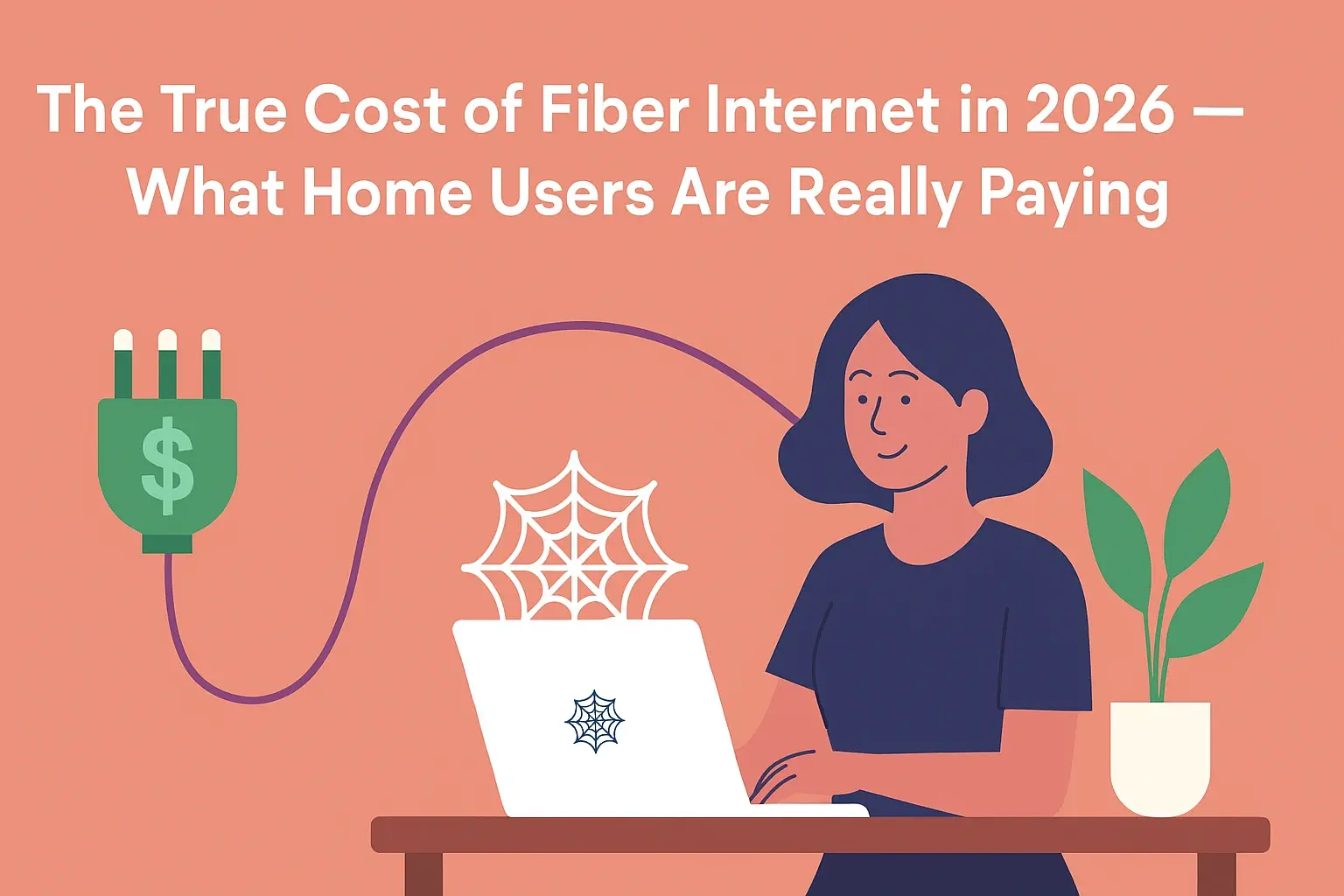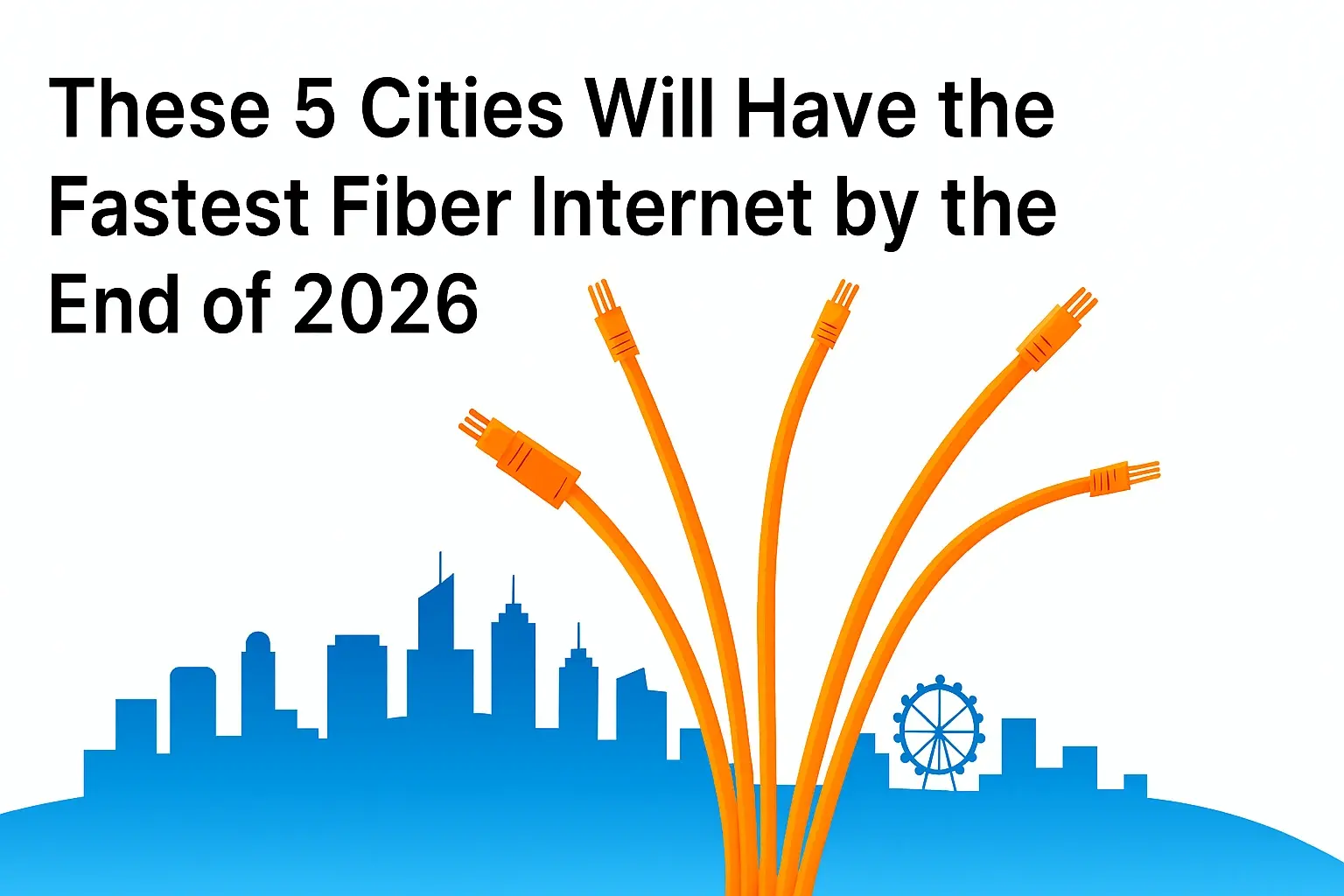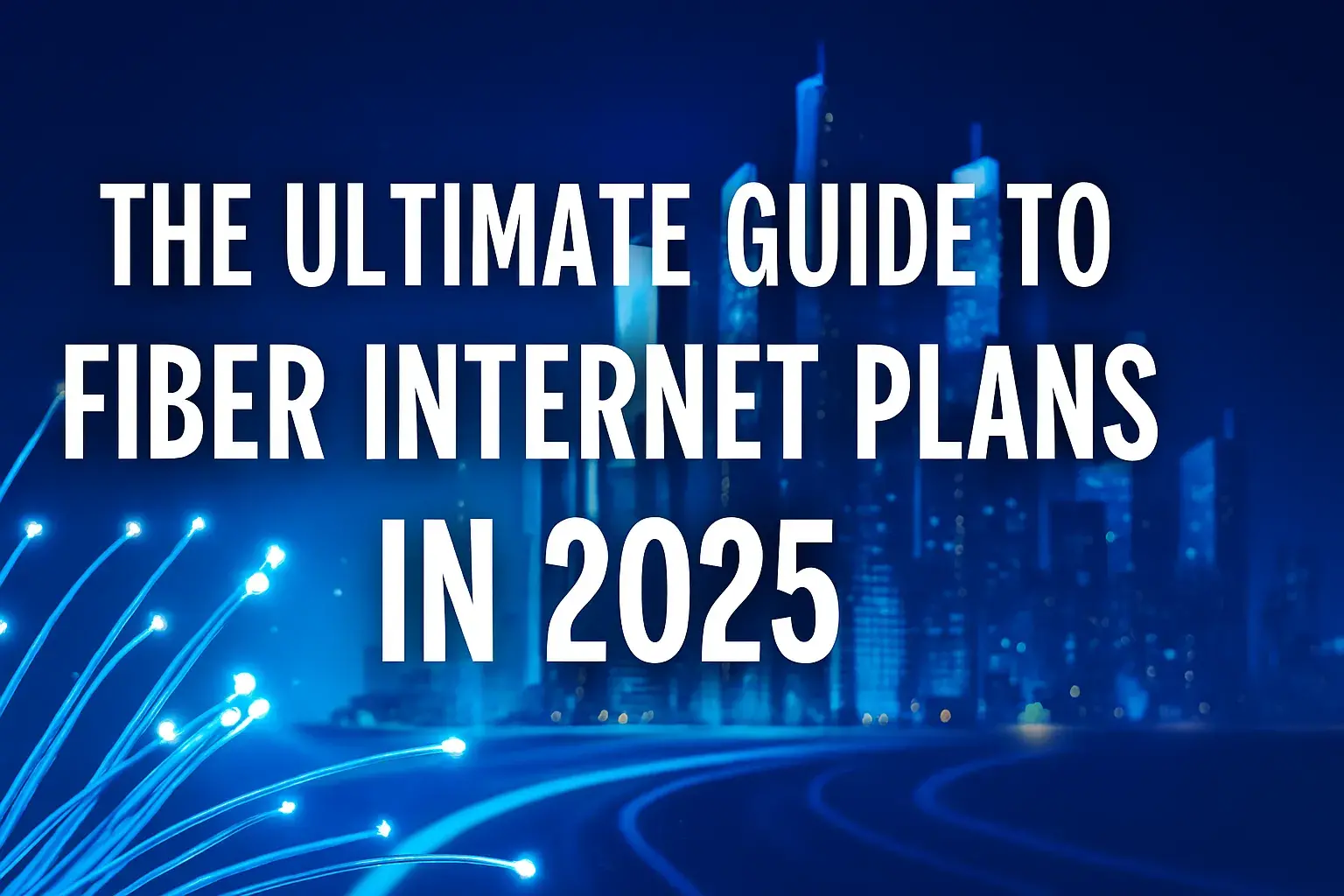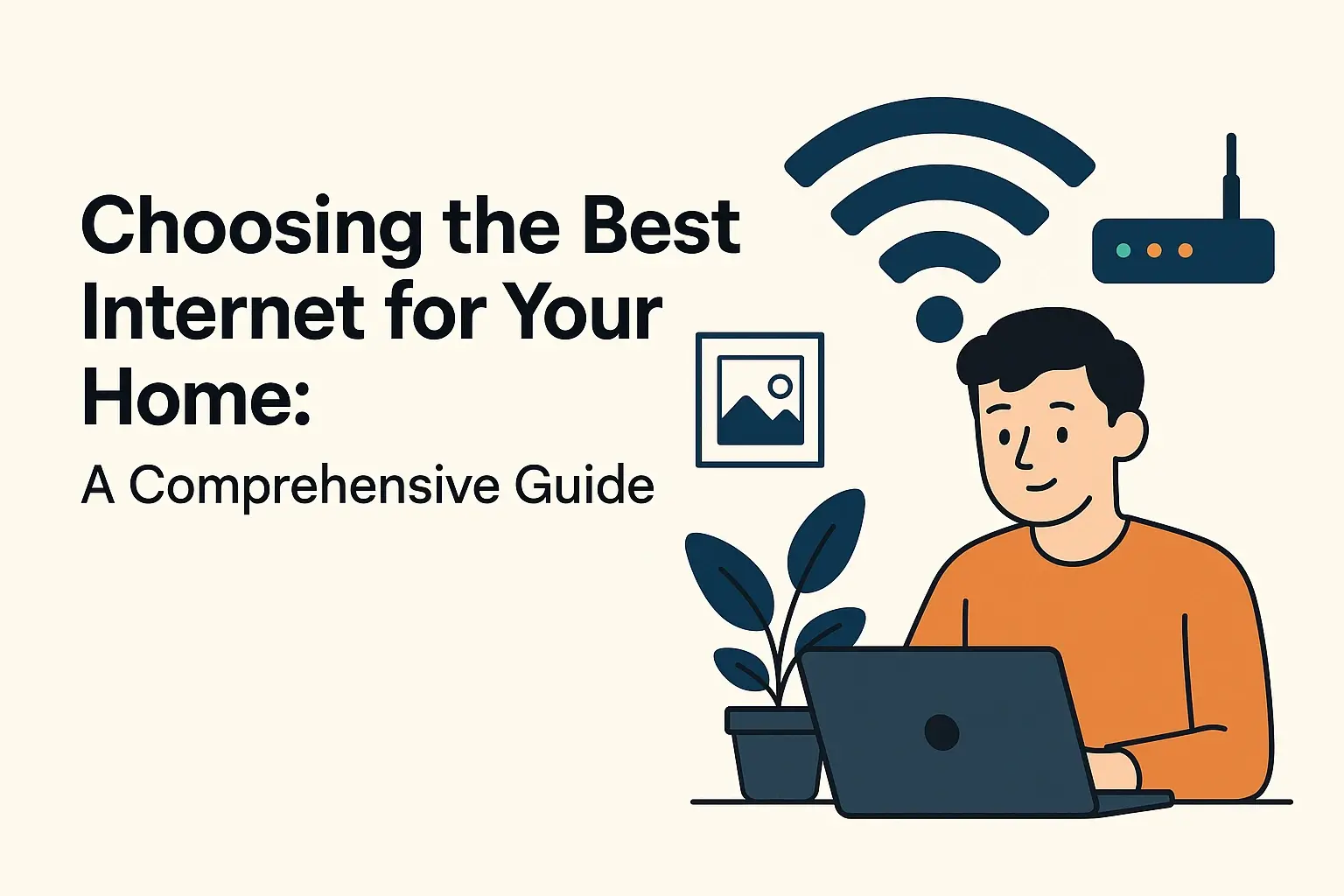How do I know if my area is Fibre ready?
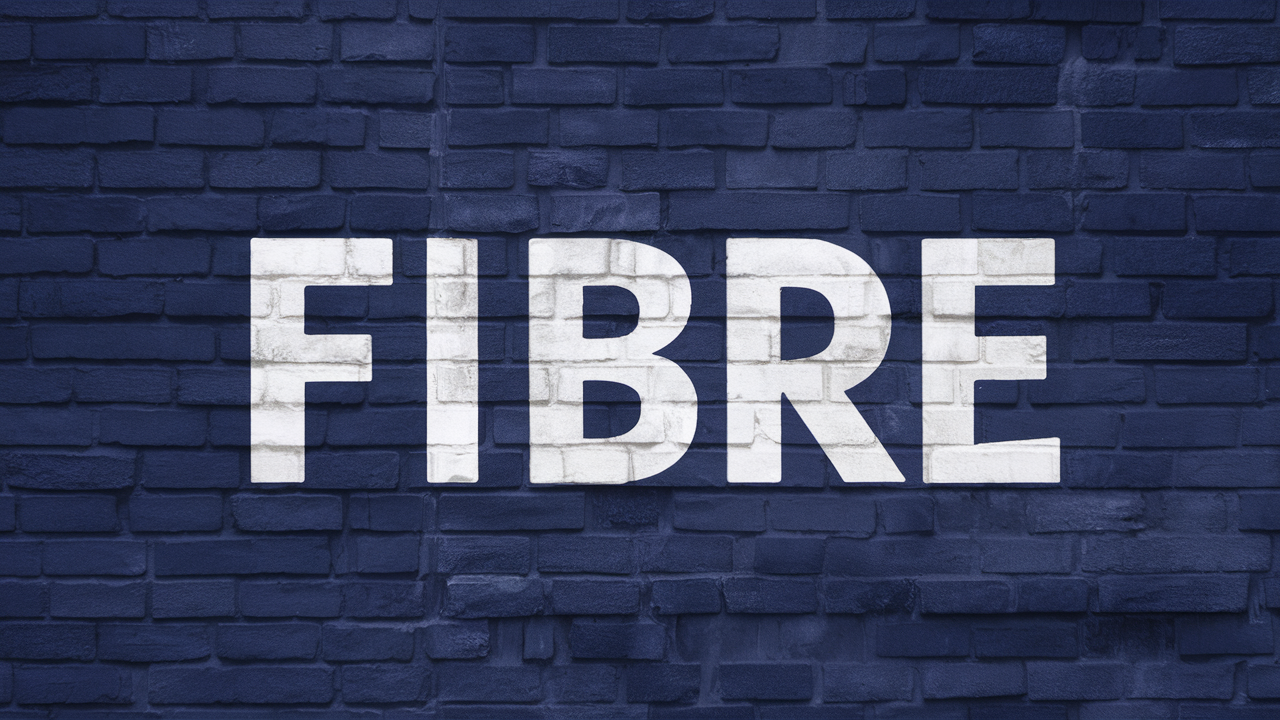
Wondering about the lightning-fast internet speeds of fibre optic? This guide will walk you through exactly how to determine if your home or business is Fibre ready, empowering you to unlock the future of connectivity. We'll cover everything from checking availability to understanding the signs of an upcoming upgrade.
What is Fibre Optic Broadband?
Fibre optic broadband, often referred to simply as "fibre," represents the pinnacle of internet connectivity available today. Unlike traditional copper-based broadband (like ADSL or VDSL), which relies on electrical signals, fibre optic uses thin strands of glass or plastic to transmit data as pulses of light. This fundamental difference allows for significantly higher speeds, lower latency, and greater reliability. In 2025, the demand for this superior technology continues to surge as more households and businesses recognise its transformative potential for everything from streaming high-definition content and online gaming to remote work and advanced smart home applications. Understanding what makes it different is the first step to determining if it's within your reach.
The core technology involves sending data through these glass fibres. Light signals travel at incredible speeds, far surpassing the limitations of electrical signals over copper wires. This means that the distance from the exchange or local cabinet has a minimal impact on your connection speed, a stark contrast to older technologies where speed degrades significantly with distance. This inherent efficiency is why fibre is often called "true" broadband, offering symmetrical upload and download speeds in many cases, which is crucial for video conferencing, cloud backups, and live streaming. As infrastructure expands, more people are asking, "How do I know if my area is Fibre ready?"
The rollout of fibre optic networks is a complex and ongoing process, driven by telecommunications providers and government initiatives aimed at improving national digital infrastructure. These projects involve laying new fibre optic cables, often underground, directly to homes (known as Fibre-to-the-Home or FTTH) or to a local street cabinet (Fibre-to-the-Cabinet or FTTC), with the final connection to your property using existing copper lines. The distinction between FTTH and FTTC is important, as FTTH offers the ultimate fibre experience, while FTTC still provides a significant upgrade over traditional broadband.
In 2025, the global fibre optic market is experiencing robust growth. According to recent industry reports, the market size is projected to reach hundreds of billions of dollars, with significant investments being made in expanding fibre networks across developed and developing nations. This expansion is fueled by increasing data consumption, the proliferation of connected devices, and the growing need for reliable, high-speed internet for economic and social participation. Therefore, the question of Fibre readiness is becoming increasingly relevant for a larger segment of the population.
Signs Your Area is Fibre Ready
Identifying whether your neighbourhood is poised for or already has access to fibre optic broadband can be done by observing several key indicators. These signs can range from visible construction work to official communications from your internet service provider (ISP) or local authorities. Being aware of these clues can help you anticipate the arrival of faster internet speeds.
Visible Infrastructure Upgrades
One of the most direct indicators is the presence of construction crews working on telecommunications infrastructure in your area. You might see:
- Engineers digging trenches or laying new cables along pavements, roads, or verges.
- New, sleeker street cabinets being installed, often painted in the colours of a specific broadband provider. These cabinets are typically smaller and more modern than older telephone cabinets.
- Visible fibre optic cables being run overhead or pulled into underground ducts.
- Workers marking the ground with spray paint, indicating planned excavation sites for new network installations.
These activities, especially if they are extensive and ongoing, strongly suggest that a fibre optic network is being deployed or upgraded in your vicinity. The scale of the work can also give clues; widespread digging across multiple streets is more indicative of a full fibre rollout than isolated repairs.
Direct Communication from ISPs and Providers
Internet service providers often engage in targeted marketing and communication campaigns when they are about to launch or expand their fibre services in a new area. Look out for:
- Mailers and leaflets: You might receive direct mail from ISPs advertising their fibre broadband packages and announcing availability in your postcode.
- Door-to-door visits: Some providers send representatives to knock on doors and inform residents about upcoming fibre services and installation options.
- Email notifications: If you are already a customer of an ISP that is rolling out fibre, they may send you emails detailing the upgrade plans and how you can switch.
- Targeted online ads: You might see advertisements for fibre broadband that are specifically targeted to your geographical area based on your IP address or location data.
These communications are usually a reliable indicator that your area is either already Fibre ready or will be very soon. It's worth keeping an eye on your post and inbox for such messages.
Local Council and Government Announcements
Many fibre optic rollouts are supported by government initiatives and local council plans to improve digital connectivity. Check for:
- Council websites: Local authorities often publish news and updates on infrastructure projects, including broadband upgrades, on their official websites.
- Public notices: Sometimes, notices are posted in public places or online regarding planned works that could impact local services, including telecommunications.
- Community forums and social media groups: Local online groups can be a good source of information, as residents often share observations about construction and availability.
These official channels can provide a broader perspective on the digital development plans for your region, confirming whether fibre deployment is a priority.
Neighbourhood Availability
A simple yet effective method is to ask your neighbours. If some of your neighbours, particularly those on adjacent streets or in the same building complex, already have fibre broadband installed and are enjoying high speeds, it's highly probable that your property is also covered or will be soon. They can often share their experience with the installation process and the providers they used.
Online Availability Checkers
The most definitive way to know is by using online postcode checkers provided by ISPs. While this is a proactive step rather than a passive observation, it's the most reliable method. We will delve deeper into this in the next section. However, if you've seen other signs, and your neighbours have fibre, it's a strong indication that the availability checker will confirm it for you.
In summary, a combination of observing physical infrastructure changes, paying attention to communications from providers, checking local authority updates, and networking with neighbours can give you a strong indication that your area is Fibre ready. These signs are often precursors to the official confirmation you'll get from an online checker.
How to Check Fibre Availability: Step-by-Step
While the signs mentioned above are good indicators, the most accurate and definitive way to determine if your specific address is Fibre ready is by using online availability checkers provided by Internet Service Providers (ISPs) and network operators. This process is straightforward and typically takes only a few minutes. Here's a step-by-step guide:
Step 1: Identify Key ISPs and Network Operators
Begin by making a list of the major ISPs operating in your region. These often include national providers as well as smaller, local ones. Some prominent examples (depending on your country) might be:
- BT (Openreach network in the UK)
- Virgin Media (UK)
- Sky (UK)
- TalkTalk (UK)
- Plusnet (UK)
- Verizon (USA)
- AT&T (USA)
- Comcast (USA)
- Telstra (Australia)
- Singtel (Singapore)
It's also beneficial to identify the underlying network operator if you're in a region where multiple ISPs use the same infrastructure (e.g., Openreach in the UK for FTTC and FTTH services). This can sometimes provide a broader picture of availability.
Step 2: Visit ISP Websites and Use Their Postcode/Address Checkers
Navigate to the official website of each ISP on your list. Most ISPs have a dedicated section or tool on their homepage where you can enter your postcode or full address to check service availability. Look for phrases like "Check Broadband Availability," "Is Fibre Available Here?" or "Enter Your Postcode."
Example Workflow:
- Go to ISP A's website.
- Find the availability checker.
- Enter your postcode.
- If it shows fibre options, note them down.
- Repeat for ISP B, ISP C, and so on.
Step 3: Understand the Results of the Availability Check
The results you receive can vary. Here are the common outcomes:
- Fibre is available: This is the ideal outcome. The checker will usually show the types of fibre available (e.g., FTTC, FTTH) and the speeds you can expect. You'll typically be presented with a list of available broadband packages.
- Fibre is coming soon: Some providers will indicate that fibre is planned for your area but not yet active. They may offer an option to register your interest or be notified when it becomes available. This is a positive sign, suggesting a rollout is imminent.
- No fibre available: This means that, according to that specific provider's database, fibre optic broadband is not currently available at your address. This doesn't necessarily mean no fibre will ever be available, just that it's not deployed by that provider yet.
Step 4: Check with the Underlying Network Operator (If Applicable)
In some countries, a single wholesale network operator manages the fibre infrastructure, and multiple ISPs sell services over it. For instance, in the UK, Openreach provides the infrastructure for many ISPs. Checking the Openreach website directly can sometimes reveal availability even if individual retail ISPs haven't updated their systems yet, or it can confirm what retail ISPs are reporting.
Example: If you're in the UK, you can check Openreach's availability checker. If it shows fibre, you then look for ISPs that use the Openreach network.
Step 5: Consider Different Fibre Types
As you check availability, pay attention to the type of fibre service offered. The most common are:
- FTTC (Fibre-to-the-Cabinet): Fibre optic cable runs from the exchange to a street cabinet near your home, and then existing copper lines connect the cabinet to your property. This offers significantly faster speeds than ADSL but is not as fast as FTTH.
- FTTH (Fibre-to-the-Home) / FTTP (Fibre-to-the-Premises): Fibre optic cable runs directly from the exchange or local hub all the way to your home or business. This provides the highest speeds and lowest latency.
If FTTH is available, it's generally the preferred option. If only FTTC is available, it's still a substantial upgrade over traditional broadband.
Step 6: Look for Local and Alternative Providers
Don't limit your search to the largest national ISPs. Smaller, regional providers or newer "alt-nets" (alternative network operators) might have deployed fibre in your area where the major players haven't. A quick search for "Fibre broadband [your town/city]" can sometimes uncover these options.
Step 7: Register Your Interest
If fibre is not yet available but is listed as "coming soon," make sure to register your interest with the provider. This not only keeps you informed but also signals demand to the network operator, which can sometimes influence deployment priorities.
By systematically checking the availability checkers of various ISPs and network operators, you can gain a clear and accurate picture of whether your area is Fibre ready. This proactive approach ensures you don't miss out on the opportunity to upgrade to high-speed internet.
Understanding Different Fibre Types
When you start researching fibre broadband, you'll quickly encounter different acronyms and technical terms. Understanding these distinctions is crucial for knowing what level of service you can expect and for making informed decisions. The primary difference lies in how far the fibre optic cable extends towards your home.
FTTC (Fibre-to-the-Cabinet)
How it works: In an FTTC network, fibre optic cables are laid from the telephone exchange to a local street cabinet. From this cabinet, existing copper telephone lines are used to connect to your home or business. This is the most common type of fibre broadband currently available in many areas.
Speeds: FTTC typically offers download speeds ranging from 30 Mbps to over 100 Mbps, and upload speeds that are significantly lower than download speeds (often around 10-20 Mbps). The actual speed you receive can depend on the distance between your property and the street cabinet – the further away you are, the slower the connection due to the remaining copper line.
Pros:
- A significant upgrade over traditional ADSL broadband.
- Widely available in many urban and suburban areas.
- Generally more affordable than FTTH.
Cons:
- Speeds are not as high as FTTH.
- Asymmetrical speeds (download much faster than upload).
- Performance can be affected by distance to the cabinet and copper line quality.
Signs you might have FTTC: You'll likely see a modern, often smaller, street cabinet on your street that is different from older, larger telephone exchange cabinets. Your ISP's availability checker will usually specify "FTTC" or "Superfast Fibre."
FTTH (Fibre-to-the-Home) / FTTP (Fibre-to-the-Premises)
How it works: This is the most advanced type of fibre optic broadband. Fibre optic cables are run directly from the exchange or a local distribution point all the way to your property. There are no copper lines involved in the final connection to your home.
Speeds: FTTH offers the highest available speeds, with symmetrical download and upload speeds commonly ranging from 100 Mbps to over 1 Gbps (1000 Mbps). In 2025, gigabit speeds are becoming increasingly common for new deployments.
Pros:
- The fastest and most reliable internet connection available.
- Symmetrical upload and download speeds, ideal for heavy users.
- Future-proof technology with capacity for even higher speeds.
- Less susceptible to interference and distance degradation.
Cons:
- Less widely available than FTTC, though rollouts are expanding rapidly.
- Installation can sometimes be more complex, potentially requiring new wiring into the home.
- May be more expensive than FTTC packages.
Signs you might have FTTH: Your ISP's availability checker will explicitly state "FTTH" or "Full Fibre." You might also see new fibre optic cables being run directly into buildings during construction work. Many new housing developments are now built with FTTH infrastructure as standard.
FTTR (Fibre-to-the-Router)
How it works: While less common as a distinct service offering from ISPs in the same way as FTTC or FTTH, FTTR refers to a setup where the fibre optic cable runs all the way to your router within your home. This is essentially the endpoint of an FTTH connection. In some advanced home networking setups, the fibre might even extend to multiple points within the house, connecting directly to routers or access points.
Relevance: For the end-user checking availability, FTTH is the key term. FTTR is more about the internal home network configuration once the fibre has reached the premises.
Comparison Table: FTTC vs. FTTH
Here's a quick comparison to highlight the key differences:
| Feature | FTTC (Fibre-to-the-Cabinet) | FTTH (Fibre-to-the-Home) |
|---|---|---|
| Connection Type | Fibre to street cabinet, copper to home | Fibre all the way to the home |
| Maximum Download Speeds (Typical 2025) | Up to 100 Mbps | 100 Mbps to 1 Gbps+ |
| Maximum Upload Speeds (Typical 2025) | Up to 20 Mbps | 100 Mbps to 1 Gbps+ |
| Latency | Moderate | Very Low |
| Reliability | Good, but can be affected by copper quality | Excellent, less susceptible to external factors |
| Availability (General) | Widespread | Growing rapidly, but less ubiquitous than FTTC |
When checking your availability, always aim for FTTH if it's an option. If not, FTTC is still a significant improvement over older technologies like ADSL or ADSL2+.
The Unbeatable Benefits of Fibre Optic Broadband
The transition to fibre optic broadband isn't just about marginal speed increases; it's about unlocking a fundamentally superior internet experience. In 2025, as our reliance on digital services grows, the benefits of fibre become even more pronounced. Whether you're a home user, a gamer, a remote worker, or a business owner, fibre offers advantages that traditional broadband simply cannot match.
Unprecedented Speed
This is the most obvious benefit. Fibre optic cables can transmit data at the speed of light, enabling download and upload speeds that are orders of magnitude faster than copper-based connections. While FTTC can offer speeds up to 100 Mbps, FTTH can deliver gigabit speeds (1000 Mbps) and beyond. This means:
- Instant downloads: Large files, movies, and software updates can be downloaded in seconds rather than minutes or hours.
- Buffer-free streaming: Enjoy 4K and 8K video content on multiple devices simultaneously without any buffering or interruptions.
- Faster web browsing: Websites load almost instantaneously, improving productivity and user experience.
Lower Latency (Ping)
Latency, often referred to as "ping," is the time it takes for data to travel from your device to a server and back. Fibre optic technology has significantly lower latency compared to copper. This is critical for:
- Online gaming: Reduced ping means a more responsive gaming experience, giving you a competitive edge and eliminating frustrating lag.
- Video conferencing: Smoother, more natural conversations with minimal delay between participants.
- Real-time applications: Essential for financial trading, remote control of machinery, and other time-sensitive operations.
Symmetrical Upload and Download Speeds
Many fibre connections, especially FTTH, offer symmetrical speeds, meaning your upload speed is as fast as your download speed. This is a game-changer for:
- Remote work: Uploading large files, participating in high-quality video calls, and accessing cloud-based applications becomes seamless.
- Content creation: Uploading videos to YouTube, streaming live content, or backing up large datasets to cloud storage is dramatically faster.
- Cloud computing: Enhanced performance for businesses relying heavily on cloud services.
In 2025, with the rise of hybrid work models and cloud-based services, symmetrical speeds are becoming a necessity rather than a luxury.
Increased Reliability and Stability
Fibre optic cables are less susceptible to external interference than copper wires. They are not affected by electromagnetic interference from nearby electrical equipment or weather conditions like moisture and temperature fluctuations, which can degrade copper lines. This leads to:
- Fewer disconnections: More stable and consistent internet access.
- Consistent performance: Speeds are less likely to fluctuate throughout the day.
- Reduced maintenance: Fibre cables are more durable and require less maintenance over their lifespan.
Future-Proofing Your Connection
The demand for bandwidth is constantly increasing. Fibre optic technology has the capacity to handle much higher speeds than current offerings. By upgrading to fibre now, you are investing in a connection that will meet your needs for many years to come, accommodating future technological advancements and increasing data consumption.
Support for Multiple Devices and Smart Homes
Modern households have numerous connected devices – smartphones, tablets, smart TVs, gaming consoles, smart speakers, security cameras, and more. Fibre optic broadband provides the necessary bandwidth to support all these devices simultaneously without compromising performance for any single one. This is essential for a truly integrated smart home experience.
Economic and Business Advantages
For businesses, fibre optic broadband is not just an IT upgrade; it's a strategic advantage. It enables:
- Enhanced productivity: Faster data transfer, seamless cloud access, and reliable communication tools.
- Improved customer service: Faster websites, smoother online transactions, and better communication channels.
- Competitive edge: Ability to adopt and leverage new digital technologies more effectively.
- Attracting talent: A robust digital infrastructure can be a key factor in attracting skilled employees who rely on high-speed internet for their work.
According to a 2025 report by the Global Digital Economy Forum, regions with widespread fibre optic coverage experience higher rates of business innovation and economic growth. Access to high-speed, reliable internet is increasingly seen as critical infrastructure for economic development.
In essence, the benefits of fibre optic broadband extend far beyond mere speed. It enhances reliability, supports modern digital lifestyles, and future-proofs your connectivity, making it an essential upgrade for individuals and businesses alike in 2025 and beyond.
Common Myths About Fibre Optic Broadband
Despite the growing prevalence and clear advantages of fibre optic broadband, several misconceptions and myths continue to circulate. These can sometimes deter people from exploring or adopting the technology. Let's debunk some of the most common myths to provide a clearer picture.
Myth 1: Fibre is prohibitively expensive.
Reality: While fibre optic broadband might have been considered a premium service in its early days, pricing has become much more competitive. In 2025, the cost of fibre packages, especially FTTC, is often comparable to, or only slightly higher than, older broadband technologies like ADSL. FTTH, while sometimes more expensive, offers a significant leap in performance that justifies the cost for many users, especially when considering the value of symmetrical speeds and reliability. Furthermore, the increased competition among ISPs offering fibre services has driven prices down.
Myth 2: Fibre optic cables are fragile and easily damaged.
Reality: Fibre optic cables are made of glass or plastic and are enclosed in protective sheathing. While they are not indestructible, they are designed to be robust and are typically installed underground or in protected conduits, shielding them from most environmental hazards. They are also immune to electromagnetic interference, unlike copper cables, which can be affected by nearby power lines or electrical appliances. The durability of fibre optic cables often exceeds that of traditional copper wiring.
Myth 3: My old router won't work with fibre.
Reality: When you sign up for fibre broadband, your ISP will usually provide you with a compatible router. This router is specifically designed to handle the higher speeds and different protocols used by fibre optic connections. While you can't typically plug a fibre optic cable directly into an old ADSL router, the provided fibre-ready router will manage the connection. For FTTH, the fibre cable usually connects to an Optical Network Terminal (ONT) box first, which then connects to the router.
Myth 4: Fibre optic cables are dangerous because they use lasers.
Reality: Fibre optic cables transmit data using light pulses, but the light sources used are typically low-power LEDs or lasers that are not harmful. The light is contained within the fibre optic cable itself. The power levels are well below those that could cause any harm to humans or animals. The primary concern with fibre optic cables is the physical act of cutting or damaging them, not the light they transmit.
Myth 5: Fibre optic broadband is only for businesses or tech enthusiasts.
Reality: Fibre optic broadband is increasingly becoming the standard for residential internet. The demand for streaming high-definition content, online gaming, video conferencing, and supporting multiple connected devices means that even typical home users benefit immensely from fibre. As more areas become Fibre ready, ISPs are marketing fibre packages to all types of consumers, recognizing its broad appeal and necessity for modern digital life.
Myth 6: The difference between FTTC and FTTH isn't significant.
Reality: There is a significant difference. FTTC uses copper for the final leg of the connection, which is a bottleneck for speed and can be affected by distance and line quality. FTTH uses fibre all the way to your home, offering much higher and more consistent speeds, lower latency, and symmetrical upload/download capabilities. For power users, gamers, or those working from home, the difference is substantial.
Myth 7: My area isn't Fibre ready, so I'm stuck with slow internet forever.
Reality: Fibre optic network rollouts are ongoing and expanding. Many areas that were not Fibre ready a few years ago are now being connected. ISPs and network operators are continually investing in infrastructure expansion. It's worth regularly checking availability, as new areas are added frequently. Furthermore, if your immediate area isn't ready, there might be alternative network providers or plans for future upgrades. Staying informed and registering interest can help.
By understanding the realities behind these common myths, you can make a more informed decision about whether fibre optic broadband is the right choice for you and take the necessary steps to check its availability in your area.
What to Do If Your Area Isn't Fibre Ready Yet
Discovering that your address isn't currently Fibre ready can be disappointing, especially if you're eager for faster internet speeds. However, this doesn't mean you're without options or that fibre will never reach you. The rollout of fibre optic infrastructure is an ongoing process, and there are proactive steps you can take to either improve your current situation or advocate for future deployment.
1. Continue to Check Availability Regularly
The most important advice is to not give up. Network operators and ISPs are constantly expanding their fibre networks. What isn't available today might be available in a few months or a year. Make it a habit to check the availability checkers of major providers and network operators (like Openreach in the UK) every few months. You might be surprised by how quickly things can change.
2. Register Your Interest
Most ISPs and network operators allow you to register your interest for fibre broadband in your area. This serves two main purposes:
- Notification: You'll be automatically notified as soon as fibre becomes available at your address.
- Demand Signal: Registering your interest helps providers gauge demand in a specific area. High levels of interest can influence their deployment plans and priorities.
Make sure to register with multiple providers if possible to increase your chances of being notified.
3. Explore Alternative Broadband Technologies
While you wait for fibre, there might be other technologies that offer an improvement over your current connection:
- 4G/5G Home Broadband: If you have good mobile signal coverage, 4G or 5G home broadband services can offer significantly faster speeds than traditional fixed-line broadband, especially in areas where fibre is not yet deployed. These services use mobile networks to provide internet to a dedicated home router. Check coverage and speeds for providers offering these solutions in your area.
- Fixed Wireless Access (FWA): In some rural or underserved areas, FWA providers use radio links to connect homes to a nearby broadband source. This can be a viable alternative to fibre, offering decent speeds where fibre infrastructure is absent.
- Satellite Broadband: For very remote locations where other options are unavailable, satellite broadband can provide a connection. However, it typically comes with higher latency and data caps compared to other technologies.
4. Advocate for Fibre Deployment
If you believe there's a significant lack of fibre coverage in your community, consider taking a more active role:
- Contact Your Local Representatives: Speak to your local councillors, Members of Parliament, or other elected officials. Highlight the need for better broadband infrastructure and ask about any government initiatives or funding for fibre rollouts in your area.
- Engage with Community Groups: Connect with local community forums, residents' associations, or social media groups. Discuss the issue with neighbours and collectively voice your demand to ISPs and local authorities. A united community voice can be more impactful.
- Support Public Initiatives: If your local government or a consortium is running a project to bring fibre to your area, lend your support and participate where possible.
5. Optimize Your Current Connection
While waiting for fibre, ensure you are getting the best possible performance from your existing broadband connection:
- Check your equipment: Ensure your router is up-to-date and in good working order. Sometimes, a new router can improve performance.
- Optimize Wi-Fi: Position your router in a central location, away from obstructions and potential interference. Consider using Wi-Fi extenders or a mesh Wi-Fi system if you have dead spots.
- Manage bandwidth: Be mindful of how many devices are using your internet connection simultaneously. Close unnecessary applications and limit large downloads during peak hours if your connection struggles.
- Contact your ISP: If you suspect you're not getting the speeds you're paying for, contact your ISP to troubleshoot the issue.
6. Consider Moving (If Feasible)
For some, especially businesses or individuals for whom high-speed internet is absolutely critical, moving to an area with better fibre coverage might be a long-term consideration. This is obviously a significant decision with many factors involved, but it's an option for those whose current location severely limits their digital capabilities.
While it can be frustrating to be in an area without fibre, remember that the landscape of internet connectivity is constantly evolving. By staying informed, registering your interest, exploring alternatives, and advocating for better infrastructure, you can navigate this situation effectively and position yourself to benefit from fibre optic broadband as soon as it becomes available.
The Future of Fibre Connectivity
The trajectory of fibre optic broadband deployment is one of continuous expansion and technological advancement. In 2025, we are witnessing an acceleration in the rollout of full fibre networks globally, driven by increasing data demands, the proliferation of connected devices, and government initiatives aimed at bridging the digital divide. The future of fibre connectivity promises even greater speeds, enhanced reliability, and broader accessibility.
Ubiquitous Full Fibre (FTTH) Deployment
The primary trend is the shift from Fibre-to-the-Cabinet (FTTC) to Fibre-to-the-Home (FTTH). As infrastructure becomes more mature, network operators are increasingly focused on bringing fibre directly to every premises. This offers the ultimate performance benefits, including gigabit speeds and symmetrical upload/download capabilities, which are becoming essential for advanced applications like virtual reality, augmented reality, and the metaverse. By 2030, it's projected that a significant majority of urban and suburban areas in developed countries will have access to FTTH.
Beyond Gigabit Speeds
While gigabit speeds are becoming mainstream, the development of even faster fibre technologies is already underway. Research and development are pushing towards 10-gigabit and even 100-gigabit per second (Gbps) connections for residential use. These advancements will be crucial for supporting the exponential growth in data consumption, driven by AI, high-resolution streaming, and the ever-expanding Internet of Things (IoT).
Increased Competition and Innovation
The fibre market is becoming increasingly competitive, with traditional ISPs, mobile operators, and new "alt-net" providers all vying for market share. This competition is not only driving down prices but also fostering innovation in service offerings, deployment methods, and customer service. We can expect to see more flexible and tailored fibre packages designed for specific user needs.
Fibre as the Backbone for 5G and Beyond
The expansion of 5G mobile networks relies heavily on robust fibre optic backhaul. Fibre infrastructure provides the high-capacity, low-latency connections necessary to support the dense network of small cells required for 5G deployment. As mobile technology continues to evolve, fibre will remain the indispensable backbone, enabling seamless integration between fixed and wireless networks.
Bridging the Digital Divide
Governments worldwide are recognizing the critical importance of high-speed internet access for economic opportunity and social inclusion. Significant investments are being made in initiatives to extend fibre networks to rural and underserved communities. While this is a complex and long-term challenge, the commitment to universal fibre access is a defining feature of the future of connectivity.
Smart Cities and IoT Integration
The development of smart cities, with interconnected sensors, autonomous vehicles, and intelligent infrastructure, will be heavily reliant on fibre optic networks. The massive data flows generated by the Internet of Things (IoT) require the speed, capacity, and reliability that only fibre can provide. Fibre will be the nervous system of future smart environments.
Sustainability and Energy Efficiency
While the initial deployment of fibre requires significant energy and resources, fibre optic technology is inherently more energy-efficient per bit of data transmitted compared to copper. As networks become more sophisticated, there is also a focus on developing more sustainable deployment methods and energy-efficient network equipment, contributing to greener digital infrastructure.
In conclusion, the future of connectivity is undeniably fibre. The ongoing rollout and technological advancements ensure that fibre optic broadband will continue to be the dominant force, providing the high-speed, reliable, and future-proof internet access that individuals, businesses, and societies will increasingly depend on. Staying informed about its availability and benefits is key to harnessing its full potential.
By understanding the signs of fibre readiness, knowing how to check availability, and appreciating the benefits and different types of fibre technology, you are well-equipped to make the transition to a faster, more reliable internet experience. Don't let outdated infrastructure hold you back; explore your fibre options today and step into the future of digital connectivity.
